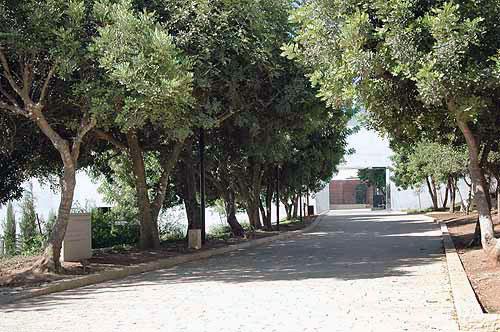
(left to right) Sharon Halpern, Sam Halpern, Yola and Derrick Szurley, George Savran and David Halpern standing in front of the Yad Vashem Visitors Center
23 October 2005
A ceremony marking the renewal of the Avenue of the Righteous Among the Nations at Yad Vashem will take place today Sunday, October 23, at 17:00.
The ceremony will be held in the presence of Abraham Hirchson MK, Minister of Tourism; Judge Jacob Turkel, Chairman of the Commission for the Designation of the Righteous Among the Nations; Eli Zborowski, Chairman of the American Society for Yad Vashem; Benefactors Gladys and Sam Halpern and Bella Savran representing her parents Eva and Arie Halpern, of New Jersey, USA; Ivan Vranetic, Chairman of the Society for the Righteous Among the Nations in Israel; and Avner Shalev, Chairman of the Yad Vashem Directorate.
Some 21,000 people have been recognized as Righteous Among the Nations to date, and their names are engraved on plaques next to the approximately 2,000 trees planted along the Avenue and throughout Yad Vashem, or on walls in the Garden of the Righteous. The Avenue signifies the remarkable phenomenon of non-Jews who risked their lives to save Jews during the Holocaust. The location of the Avenue, which leads from the Visitors Center to Warsaw Ghetto Square, provides a poignant introduction to the site as a whole. Before entering the new Holocaust History Museum, which presents the story of the Shoah, the visitor is reminded that there was an alternative: there were individuals who chose to walk the righteous path and shine a glimmer of light amidst the darkness.
During the planning stages of Yad Vashem’s Multiyear Development Plan, a decision was made to renovate the Avenue and integrate it into the structure of the new Museum. Traversing the glass roof of the building, the Avenue has become an inseparable part of the Museum, allowing visitors inside to see the trees reflected in the glass-and those on the Avenue above to look down into the Museum-allowing them to internalize the crucial role played by the minority of non-Jews who, at great personal risk, saved many Jewish lives while morality was collapsing all around them.









